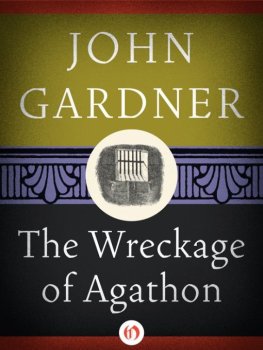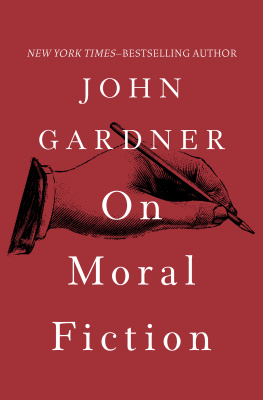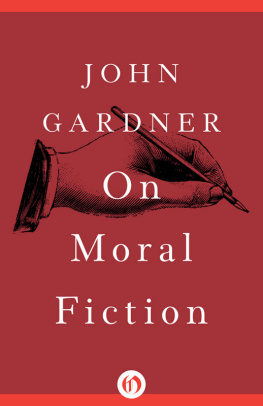John Gardner - Law as a Leap of Faith
Here you can read online John Gardner - Law as a Leap of Faith full text of the book (entire story) in english for free. Download pdf and epub, get meaning, cover and reviews about this ebook. year: 2012, publisher: Oxford University Press, genre: Religion. Description of the work, (preface) as well as reviews are available. Best literature library LitArk.com created for fans of good reading and offers a wide selection of genres:
Romance novel
Science fiction
Adventure
Detective
Science
History
Home and family
Prose
Art
Politics
Computer
Non-fiction
Religion
Business
Children
Humor
Choose a favorite category and find really read worthwhile books. Enjoy immersion in the world of imagination, feel the emotions of the characters or learn something new for yourself, make an fascinating discovery.

- Book:Law as a Leap of Faith
- Author:
- Publisher:Oxford University Press
- Genre:
- Year:2012
- Rating:5 / 5
- Favourites:Add to favourites
- Your mark:
- 100
- 1
- 2
- 3
- 4
- 5
Law as a Leap of Faith: summary, description and annotation
We offer to read an annotation, description, summary or preface (depends on what the author of the book "Law as a Leap of Faith" wrote himself). If you haven't found the necessary information about the book — write in the comments, we will try to find it.
Law as a Leap of Faith — read online for free the complete book (whole text) full work
Below is the text of the book, divided by pages. System saving the place of the last page read, allows you to conveniently read the book "Law as a Leap of Faith" online for free, without having to search again every time where you left off. Put a bookmark, and you can go to the page where you finished reading at any time.
Font size:
Interval:
Bookmark:
(p.iv) 
- Great Clarendon Street, Oxford, OX2 6DP,
- United Kingdom
- Oxford University Press is a department of the University of Oxford.
- It furthers the University's objective of excellence in research, scholarship,
- and education by publishing worldwide. Oxford is a registered trade mark of
- Oxford University Press in the UK and in certain other countries
- J. Gardner, 2012
- The moral rights of the author have been asserted
- First Edition published in 2012
- Impression: 1
- All rights reserved. No part of this publication may be reproduced, stored in
- a retrieval system, or transmitted, in any form or by any means, without the
- prior permission in writing of Oxford University Press, or as expressly permitted
- by law, by licence or under terms agreed with the appropriate reprographics
- rights organization. Enquiries concerning reproduction outside the scope of the
- above should be sent to the Rights Department, Oxford University Press, at the
- address above
- You must not circulate this work in any other form
- and you must impose this same condition on any acquirer
- Crown copyright material is reproduced under Class LicenceNumber C01P0000148 with the permission of OPSIand the Queens Printer for Scotland
- British Library Cataloguing in Publication Data
- Data available
- Library of Congress Cataloging in Publication Data
- Library of Congress Control Number: 20129354
- ISBN 9780199695553
- Printed in Great Britain by
- CPI Group (UK) Ltd, Croydon, CR0 4YY
- Links to third party websites are provided by Oxford in good faith and for information only. Oxford disclaims any responsibility for the materials
- contained in any third party website referenced in this work.
In this book I have collected nine essays published over the past fifteen years, adding two previously unpublished ones (Chapters have been subjected to some more material changes.
My attempts to write an introduction that would paint the bigger picture were unsuccessful, because there is no bigger picture. I dont have a theory of law, let alone what Ernest Weinrib calls a comprehensive theoretical position[with] broad philosophical vistas. I have quite a lot of thoughts about law in general and I can only hope that they turn out to be consistent with one other. That they form any more perfect union than that is neither likely nor desirable. Philosophy is not the art of compiling as many little thoughts as possible into as few big thoughts as possible, but the art of wearing every thought down to its rightful little size and then keeping it in its rightful little place. So the main mission of this book, as I see it, is unbundling: separating out disparate thoughts that have often been regarded, mistakenly, as part of some package deal.
The marketing of ideas in package deals appeals to many law students, at any rate in the English-speaking world. Quite apart from making it a lot easier to come up with boilerplate text that can be learnt for the exam, the package deal approach allows one to think of philosophy on the familiar model of an adversarial trial, whether individual litigation such as Hart v Dworkin, Posner v Weinrib, and Razv Finnis, or class actions such as Positivism v Natural
As these remarks suggest, many of the essays included here were originally written with pedagogical objectives in mind, responding to perennial misconceptions on the part of my students. You will struggle to find any conspicuously novel ideas about law in the book. Most of the novelty that there is lies in the way in which the ideas are explained and combined. A lot of my thinking is owed, directly or indirectly, to H.L.A. Hart. In what follows, I often attempt to elaborate Hartian ideas, to remove Hartian hestitations, and to reformulate Hartian misstatements. Sometimes (eg in Chapter most of the attention here. This opens the way, I hope, to a cleaner understanding, later, of the (limited but crucial) ways in which specifically social norms figure in law, and also of the various kinds of non-social norms that also have their part to play in a full understanding of the laws modality.
The quest for that cleaner understanding becomes a major preoccupation in Chapters , under cover of studying the nature of constitutions, investigates the essential place of a customary ultimate rule of recognition in every legal system. Here we confirm (and even toughen up) Harts claim that there is no legal system without at least one social norm.
In Chapters if we puritanically refuse to use the bogeymans name to designate anything at all?
Here are some other ways of combining chapters, for those with more specific fish to fry. Chapter ). This invocation (laws moral claim) represents, I argue, an important necessary connection between law and morality.
So do the connections explored in Chapters the quickest way to sample this part of the book.
For those who dont have time even for the whistle-stop tour, here is the slideshow. In other words, here is a list of some of the principal theses that are defended or supported in the book, with brief location information. (p.ix)
All law is made by people (Chapters ).
Some sound legal reasoning (usually by the higher courts) is capable of making new law, often accidentally (Chapters ).
The content of all law is the content it was given by its makers and changers (including those who make and change law by applying it), never mind what content they ought to have given it (Chapters ).
This includes the law that determines who counts as an ultimate maker or changer of law (what Hart calls rules of recognition) (Chapter ).
There are therefore no moral criteria (necessary or otherwise) for establishing what the law on any given matter says (Chapters ).
Nevertheless, there are necessary (conceptually necessary) connections between law and morality (Chapters ).
A necessary connection: law by its nature holds itself out as morally binding, even though that may be a mistake or a pretence (Chapter ).
Another necessary connection: legal reasoning is moral reasoning with one or more legal premises (Chapters ).
Also, there is a moral ideal for law, the ideal of legality or the rule of law, laws answerability to which is conceptually determined (ie is part of the very concept of law) (Chapters ).
And there is also, although more indirectly, a conceptual connection between law and justice (Chapter ).
Both the connection between law and legality, and that between law and justice, confirm that law is a modal as opposed to a functional kind; ie it is disinguished by how it does what it does, not by why (Chapters ).
All of this, and more, is true of law in general (Chapter ).
For valuable conversations about and comments on the various topics, mostly at the time of original writing but some more recently, my thanks go to Larry Alexander, John Attanasio, Nick Barber, Jes Bjarup, Bruno Celano, Jules Coleman, Sylvie Delacroix, Michelle Dempsey, Julie Dickson, Sionaidh Douglas Scott, Lus Duarte dAlmeida, Doug Edlin, Richard Ekins, (p.x) Timothy Endicott, John Finnis, Robbie George, Les Green, Ken Himma, Elisa Holmes, Tony Honor, Matthias Klatt, Maris Kpcke Tintur, Matt Kramer, Niki Lacey, Brian Leiter, the late Neil MacCormick, Tim Macklem, Margaret Martin, Jos Juan Moreso, Mark Murphy, Peter Oliver, Joseph Raz, Charles Silver, Nigel Simmonds, Tomasz Stawecki, Shiv Swaminathan, Victor Tadros, John Tasioulas, Massimo la Torre, Isabel Trujillo, and Wil Waluchow.
Font size:
Interval:
Bookmark:
Similar books «Law as a Leap of Faith»
Look at similar books to Law as a Leap of Faith. We have selected literature similar in name and meaning in the hope of providing readers with more options to find new, interesting, not yet read works.
Discussion, reviews of the book Law as a Leap of Faith and just readers' own opinions. Leave your comments, write what you think about the work, its meaning or the main characters. Specify what exactly you liked and what you didn't like, and why you think so.










![John W. Gardner - Self-Renewal: The Individual and the Innovative Society [First Edition]](/uploads/posts/book/163439/thumbs/john-w-gardner-self-renewal-the-individual-and.jpg)


